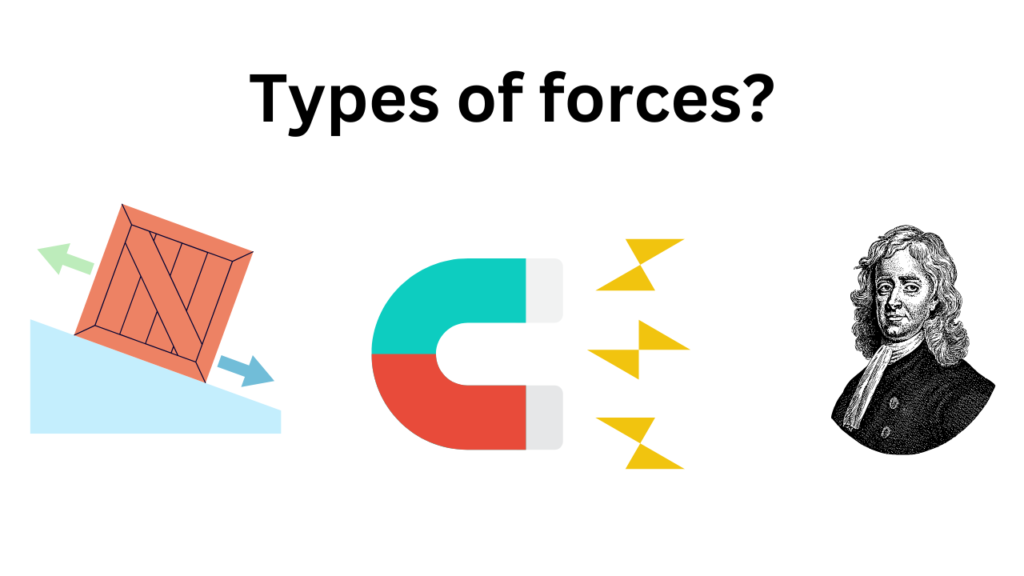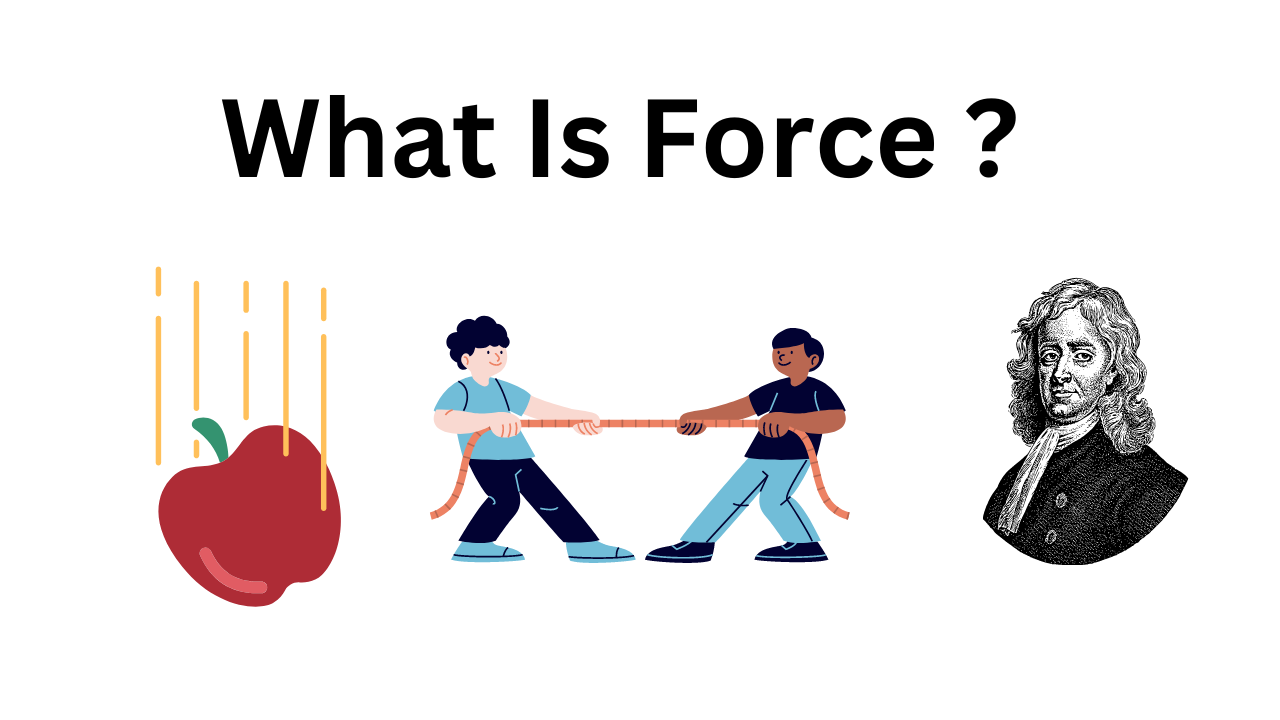This article gives you the proper explanation of what is force. This article gives you the exact definition of the force as nobody can change the actual definitions.
After solid research, we finally have given this information related to the force, types of force, and formulas.
Force is a fundamental concept in physics that describes the interaction between objects or systems. It refers to a push or pull that can cause a change in the motion or shape of an object. Forces can be categorized based on their origin and nature, such as gravitational force, electromagnetic force, nuclear force, and frictional force.
According to Newton’s laws of motion, force is directly related to the acceleration of an object. When a force is applied to an object, it can cause it to accelerate, decelerate, change direction, or deform. The magnitude of a force is typically measured in units of Newtons (N) in the International System of Units (SI).
Forces can be represented as vectors, which means they have both magnitude and direction. The direction of the force determines how it influences the object it acts upon. Forces can be applied in various ways, including through direct contacts, such as when you push or pull an object, or through non-contact interactions, such as gravitational forces acting between two objects without physical contact.
Note: It’s important to note that forces always occur in pairs, known as action and reaction forces, as stated by Newton’s third law of motion. According to this law, for every action, there is an equal and opposite reaction. This means that when an object exerts a force on another object, the second object simultaneously exerts an equal and opposite force on the first object.
What Are Types Of Forces?
| Force plays a major role in our daily life because is seen everywhere practically. |
Spoken Description:
- Gravity
- Normal force
- Friction
- Applied Force
- Tension Force
- Spring Force
- Electromagnetic Force
- Buoyant Force
- Drag Force
Types of Forces
There are many types of forces that can act on objects. Here are some of the more common types of power:
- Gravity: Gravity is the force of attraction between two objects having mass. It is responsible for the weight of objects and the movement of celestial bodies. On Earth, gravity pulls objects toward the center of the planet.
- Normal force: Normal force is the force that a surface bears on the weight of an object resting on it. It acts perpendicular to the surface and prevents the material from sinking through it.
- Friction: Friction is a force opposing the relative motion or direction of motion between two surfaces in contact. It can be useful when walking or driving a car, or it can be unnecessary, causing resistance and wear and tear.
- Applied Force: Applied force is the direct pushing or pulling of an object by another object or person. It is a force applied externally to an object.
- Tension Force: Tension is the force transmitted by a string, rope, cable or any type of flexible connector. It is always directed away from an object along the length of the connector.
Some more examples
- Spring Force: Spring force, also known as elastic force, is exerted by a stretched or compressed spring or any elastic material. It is proportional to the displacement from the equilibrium position.
- Electromagnetic Force: Electromagnetic forces include electric forces and magnetic forces. They are associated with charged particles and their interactions. Electric forces involve attraction or repulsion between charged objects, while magnetic forces arise from the motion of charged particles in magnetic fields.
- Buoyant Force: Buoyant force is the upward force exerted by a fluid (liquid or gas) on a submerged or floating object. It resists gravity and is responsible for the buoyancy of substances in liquids.
- Drag Force: Drag is a force that resists the motion of an object through a fluid (liquid or gas). It is caused by the interaction between the object and the fluid and increases with the velocity of the object.
Note: These are some examples of different types of power. There are many other forces depending on specific circumstances and interactions.
| Call to Action: These are different types of forces where commonly used in studies and other purposes. |

Know more about what is the formula for force.
| The formulas for calculating forces depend on the specific type of force and the context in which it is being applied. Here are some common formulas for calculating forces: |
Spoken Descriptions
- Force(f)
- Weight (W)
- Force of friction (Ff)
- Hooke’s Law
- Centripetal force (Fc)
- Force (F) = mass (m) × acceleration (a) [Newton’s second law of motion]
This formula relates the force acting on an object to its mass and the acceleration it experiences. It states that force is equal to the mass of an object multiplied by its acceleration. Mathematically, it can be written as F = ma. - Weight (W) = mass (m) × gravitational acceleration (g)
Weight is a specific type of force representing the gravitational force exerted on an object. The formula states that weight is equal to the mass of an object multiplied by the acceleration due to gravity. Mathematically, it can be written as W = mg. - Force of friction (Ff) = coefficient of friction (μ) × normal force (N)
The force of friction is the force that opposes the motion or tendency of motion between two surfaces in contact. It depends on the coefficient of friction, which is a property of the surfaces in contact, and the normal force exerted by the surface. Mathematically, it can be written as Ff = μN.
Some more information about formulas
- Hooke’s Law: Force (F) = spring constant (k) × displacement (x)
Hooke’s Law describes the force exerted by a spring when it is stretched or compressed. The force is directly proportional to the displacement from the equilibrium position and the spring constant. Mathematically, it can be written as F = kx. - Centripetal force (Fc) = mass (m) × centripetal acceleration (ac)
Centripetal force is the force that keeps an object moving in a circular path. It is directed towards the center of the circular motion and depends on the mass of the object and the centripetal acceleration it experiences. Mathematically, it can be written as Fc = mac.
These are just a few examples of force formulas. The specific formulas for different forces can vary depending on the physical laws and principles governing the interaction. if you are interested to know about lenses click here.
| Call to Action: These are some formulas of forces. This formulas are gathered hardly to help you in solving problems |
Our Opinion:
This article takes a lot of knowledge and shares it with you all collected from multiple sources. It also helps you in an external way like daily life knowledge. Apart from scores, it also helps you improve your IQ knowledge. It will help you in more places where problems were asked based on force.
